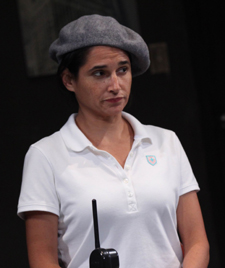
Historically Speaking: Gatsby’s Brooklyn Connection

In 1925, Charles Scribner’s Sons published The Great Gatsby, the most recognizable of F. Scott Fitzgerald’s works. In structure, the novel reaches epic proportions with a Shakespearian pyramid of ascent and decline. In theme, it fulfills a description of the American dream: success and failure. In reality, Gatsby is a glorified thug.
I discovered the novel in my college years, which was about the time the rest of America was re-discovering the oeuvre and value of Fitzgerald. This was followed by the first big Hollywood interpretation in 1949, starring Alan Ladd. An earlier version had been released the year after the book’s publication with Warner Baxter as Gatsby and William Powell as Wilson, the garage owner.
The big screen color version of 1974 starred Robert Redford and Mia Farrow, with Sam Waterston as Nick Carraway, the narrator, and Howard Da Silva, who had also been in the Alan Ladd film as Wilson, returning as a different character. It appeared on the TV screen in 2000 starring Mira Sorvino as Daisy and Toby Stephens as Gatsby. And, to show the staying power of the work, it will return this year starring Leonardo DiCaprio as Gatsby, Carey Mulligan as Daisy and Toby Maguire as Carraway, directed by Baz Luhrmann and filmed in 3-D. In 1999, it even materialized as an opera.
But the real news concerns a 7-hour stage production — with a dinner break — named Gatz, the original name of the main character. It appeared off-Broadway in 1999, produced by the Elevator Repair Service, and will return soon at The Public Theater. I saw it at Princeton’s McCarter Theatre Center.
The Brooklyn hook to this story is Susie Sokol, the actress who plays Jordan Baker, friend of Daisy; a character modeled after Edith Cummings who had won the 1923 women’s golf championship. In real life, Sokol is a second-grade teacher at St. Ann’s School in Brooklyn where she has taught for 14 years.
In case you haven’t heard, Gatz runs seven hours because it is the literal reading of the complete novel. The play’s name was altered to highlight the sinister background of Gatsby. It is his real name but also alludes to a slang term for a gun.
The play — set at an office in which a character picks up the book and starts reading aloud as other characters step into roles from the text — reveals aspects of Fitzgerald’s masterpiece with actions contrary to the words. This lightens up the theater experience.
Listening to the play, it’s fun to place the locations between Manhattan and Great Neck (West Egg), tracing them before the construction of several bridges and the Long Island parkways. While the reading emphasizes the seeming simplicity of Fitzgerald’s plot structure, it also exposes its systematic and creative structure. Gatsby reflects a most contemporary personality, one who can’t understand the limitations of the power of money. Just as Shakespeare’s Othello cannot fathom his own weakness, neither can Fitzgerald’s Gatsby. This emerges as his fatal flaw.
The afternoon/evening emerges as a powerful and enjoyable experience, one that retains vivid imagery. A similar production, The Select, was created by the same company, based on The Sun Also Rises by Hemingway, but the text was abridged and the result was not as effective. The Great Gatsby stands as a work of great literature, enriched by the theatrical experience, one I highly endorse.
The run at The Public Theater is limited, March 14–May 6. Get tickets soon and enjoy. It’s worth the experience.
© 2012 John B. Manbeck
Leave a Comment
Leave a Comment